The werewolf is a figure taken from folklore – a human that is believed to be able to transform into a wolf. The term ‘werewolf’ is derived from the Old English ‘werewulf’. An alternate term used for the condition is lycanthropy, which derives from Ancient Greek.
The idea of the werewolf stretches back in folklore to at least Ancient Greece. There were accounts during the Mediaeval period of people being killed because it was believed they were werewolves. Usually in folklore, the werewolf was seen either as a person that had communed with The Devil or indulged in the sorcerous arts, while other accounts attribute its powers to great warriors.
When it comes to werewolf films, what people consider werewolf lore was only something that was laid down by the film The Wolf Man (1941). This invented many of the commonly accepted characteristics of werewolf lore – that it transforms under the light of the full moon and can only be killed by a silver bullet. (The werewolf’s vulnerability to silver comes from folklore, although it was never stated that that is what is needed to kill a werewolf).
The Early Days and the Universal Years
The first werewolf film was the now lost short film The Werewolf (1913) about the daughter of an American Indian witch who transforms into a wolf and the British-made The Wolf Man (1923) where the son of an aristocratic family becomes a wolf. The earliest still-existing treatment is Wolfblood (1925) where a man becomes a wolf after receiving a blood transfusion from a wolf.
The first Hollywood film to deal with the subject was Universal’s WereWolf of London (1935), although this was not a wide success but is an interesting prefigural of the themes before the 1941 film introduced the essential tropes. There was also the British film The Face at the Window (1939) with Tod Slaughter as a killer who is believed to be wolf-like.
The classic werewolf tale however was Universal’s The Wolf Man (1941) starring Lon Chaney Jr as the werewolf Larry Talbot. This laid down many of the key aspects that are now considered werewolf lore. Screenwriter Curt Siodmak wrote the poem that created the essential mythology of the werewolf. This has been repeated by other films.
“Even a man who is pure in heart
And says his prayers by night;
May become a wolf when the wolfbane blooms
And the autumn moon is bright.”
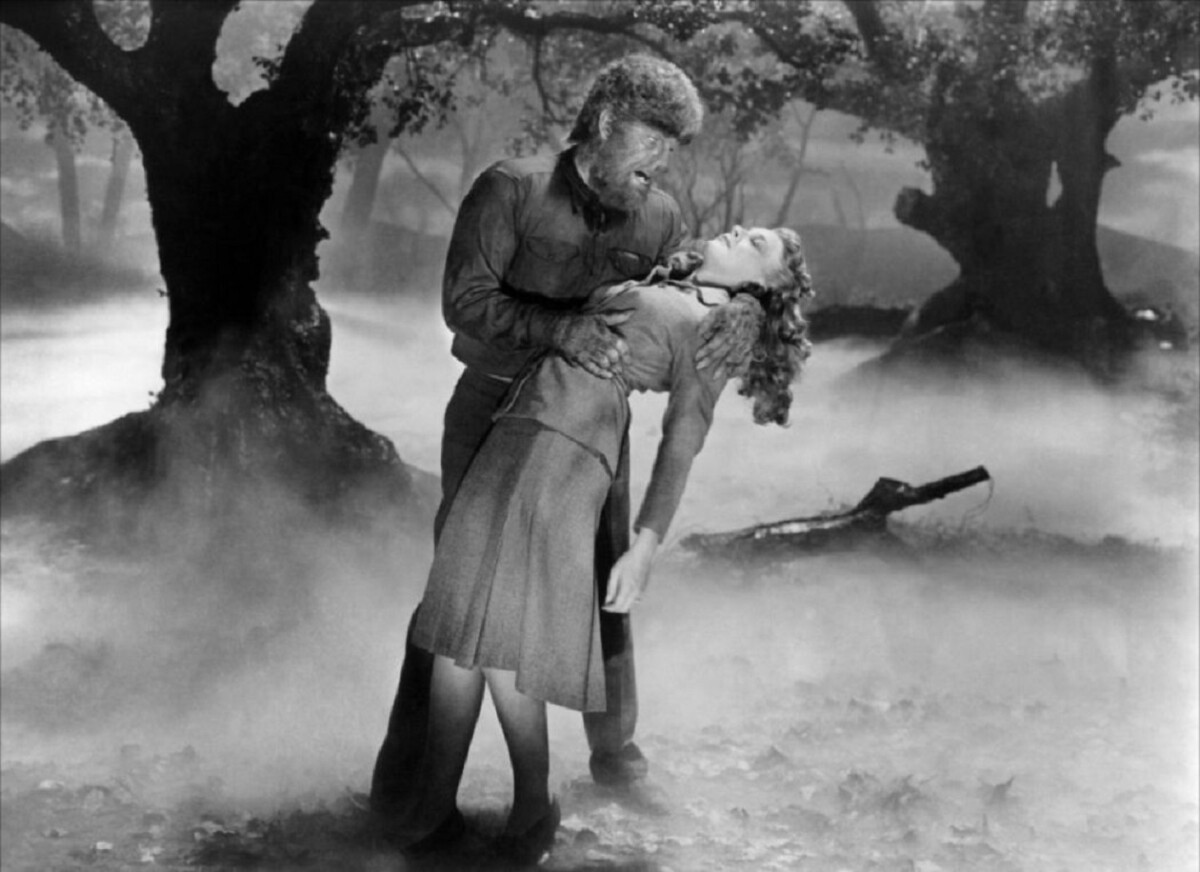
The film was never sequelised but Larry Talbot subsequently became one of Universal’s in-house monsters appearing alongside various other monsters beginning with Frankenstein Meets the Wolf Man (1943) and continuing through House of Frankenstein (1944) and House of Dracula (1945), before appearing as a comic foil in Abbott and Costello Meet Frankenstein (1948).
There were occasional other werewolf films during this period with The Mad Monster (1942) where mad scientist George Zucco turns his handyman Glenn Strange into a werewolf with injections of a formula (with the claim that he is trying to create werewolf soldiers for the War Effort!); The Undying Monster (1942), a whodunnit in a British mansion where people try to work out the identity of the wolf, and She-Wolf of London (1946) with June Lockhart as a female werewolf. Bela Lugosi’s vampire in Return of the Vampire (1944) comes accompanied by a werewolf assistant.
One of the most influential works, while not an actual werewolf film, was the Val Lewton film Cat People (1942) about a sexually repressed woman who believes that she is afflicted with a hereditary curse that causes her to turn into a black panther. The effectiveness of the film lay in that we never see any actual transformation and it is suggested that it could all well be in her mind, while what we see could equally be in the viewer’s imagination.
The 1950s Revival and the Anglo-Horror Werewolf
The genre received a revival with the big hit of I Was a Teenage Werewolf (1957) with troubled school kid Michael Landon turning into a werewolf, where the film became an unintentional metaphor about teenage aggression.
There were other oddities during this era such as The Werewolf (1956), which tapped into the 1950s atomic monster fad and had a man become a werewolf after being injected with radioactive wolf blood. Daughter of Dr. Jekyll (1957) was a Jekyll and Hyde film that actually turned out to be a werewolf film (and reveal that Dr Jekyll suffered from lycanthropy).
Hammer Films enjoyed great success with their revivals of the horror classics during this period. Hammer’s sole ventures into werewolf themes were The Curse of the Werewolf (1961) set in 18th Century Spain with Oliver Reed as the cursed child of a raped woman who becomes a wolfman in adulthood, along with the Children of the Full Moon (1980) episode of the tv anthology series Hammer House of Horror.
Subsequent films during the Anglo-Horror Cycle, include a segment of the Amicus anthology Dr Terror’s House of Horrors (1965) and the full-length Legend of the Werewolf (1974), which owed much to The Curse of the Werewolf. Amicus’s The Beast Must Die (1974) was a werewolf whodunnit wherein a big game hunter invited a group of guests, one of whom he is certain is a werewolf, to his country estate with the intention of hunting them as the full moon rises.
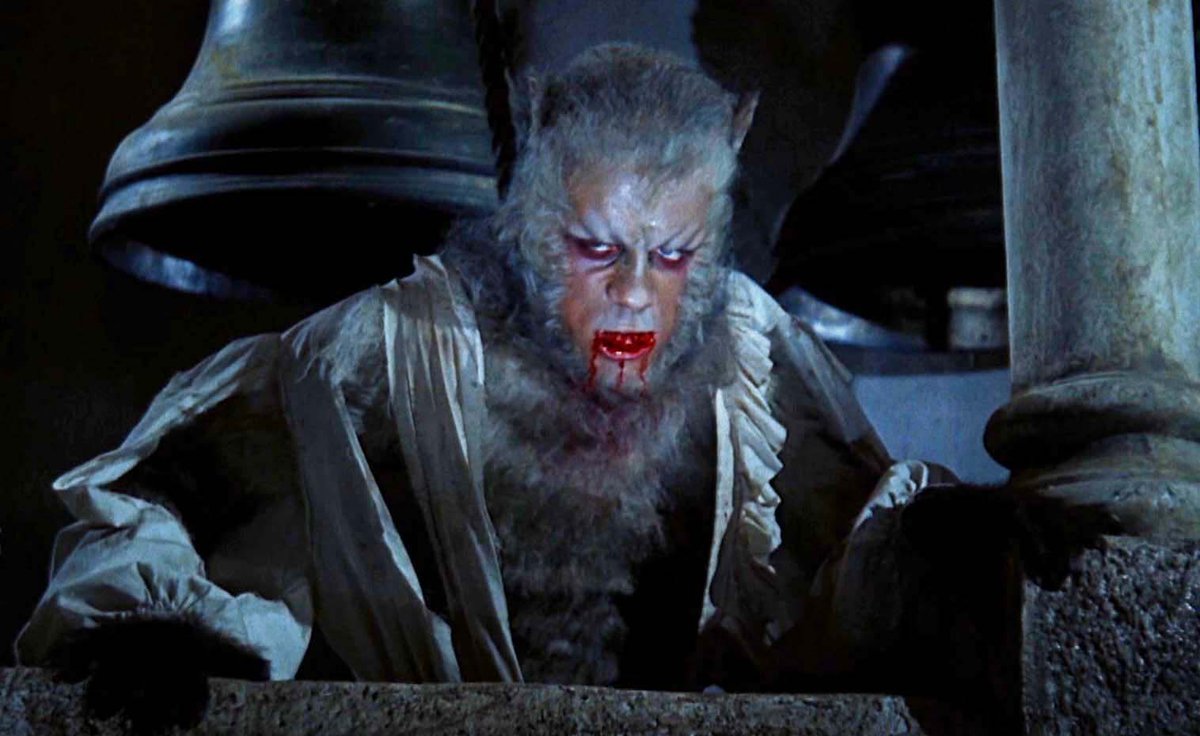
Throughout the 1960s/early 1970s, there were a host of B movies treatments with the likes of Face of the Screaming Werewolf (1964), House of Black Death (1971), Andy Milligan’s pitifully cheap The Rats Are Coming! The Werewolves Are Here! (1972) and The Wolfman (1979), while a werewolf even turns up in the nudie Dracula (The Dirty Old Man) (1969). There was also the bizarre Japanese Wolf Guy (1975) with Sonny Chiba as a werewolf hunting other monsters.
The 1970s saw assorted tv approaches with the tv movies Moon of the Wolf (1972) and Scream of the Wolf (1974) and the Kolchak: The Night Stalker episode The Werewolf (1974). The tv series Dark Shadows (1966-71) introduced the ongoing character of the werewolf Quentin Collins (David Selby).
The most popular werewolf (if we are to measure by number of screen appearances) was Spanish actor Paul Naschy’s Waldemar Daninsky. Daninsky first appeared in Frankenstein’s Bloody Terror (1968), which is a werewolf film despite the title. Naschy went on to appear as Waldemar Daninsky in nine other films:- Dracula vs. Frankenstein (1970), The Werewolf vs the Vampire Woman (1971), The Fury of the Wolfman (1972), Dr Jekyll and the Wolfman (1972), Curse of the Devil (1973), The Werewolf and the Yeti (1975), Return of the Wolfman/The Craving (1980), The Beast and the Magic Sword (1983) and Licanthropus (1996), while Naschy also appears in A Werewolf in the Amazon (2005).
Around the same period, there was also the surprising prevalence of werewolves among the line of classical monsters that were pitted against Mexican wrestling superheroes in the likes of The Blue Demon (1965), Santo and Blue Demon vs the Monsters (1970) and Santo and Blue Demon vs the Wolfman (1973).
Comedic and Gonzo Approaches
The werewolf theme began to make its way into comedy beginning with Disney’s The Shaggy Dog (1959), which had Tommy Kirk transforming into a sheepdog after putting on a magic ring. This was later sequelised as The Shaggy D.A. (1976) and remade as The Shaggy Dog (2006) with Tim Allen.
Comedic werewolves also appeared in assorted Famous Monsters bashes with the likes of the Mexican Castle of the Monsters (1957), the British Carry On Screaming (1966) and the delightful children’s film Mad Monster Party? (1967). TV’s The Munsters (1964-66) featured a family of monster lookalikes including Butch Patrick as the werewolf son of the family.
In the modern era, we have had occasional light-hearted efforts paying homage to the monster bash such as Transylvania 6-5000 (1985) and The Monster Squad (1987) and the animated Hotel Transylvania (2012) and sequels, as well as minor appearances in The Nightmare Before Christmas (1993) and What We Do in the Shadows (2014).
The werewolf made a revival during the 1960s and particularly into the 1970s in a succession of wacky title concepts. This was a fad that had clearly been sparked by I Was a Teenage Werewolf and was followed Werewolf in a Girl’s Dormitory (1961), an otherwise dreary effort sold with a sensationalistic title, and The Boy Who Cried Werewolf (1973), a dull effort about a child discovering that his father has been infected with the bite and not being believed.
The highly amusing but surprisingly seriously told Werewolves on Wheels (1971) concerned a biker gang where one of the members is turned into a werewolf by Satanists, while there was The Werewolf of Washington (1973) about a lycanthropic politician and The Werewolf of Woodstock (1975) set at the site of the famous music festival.
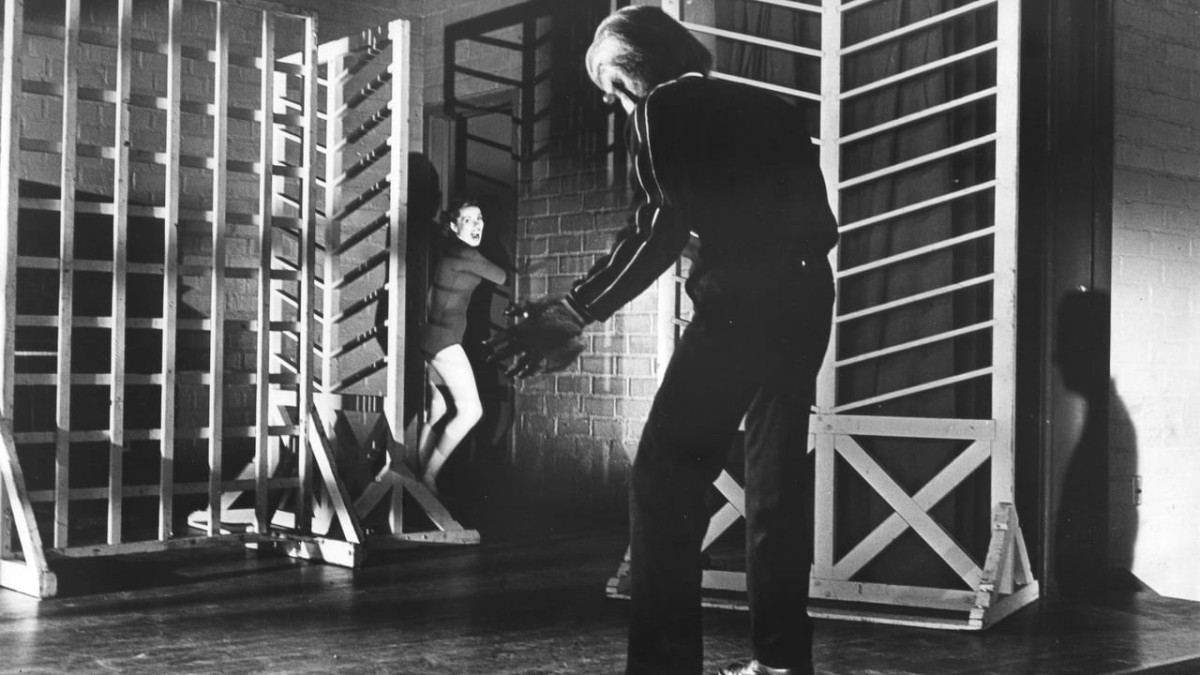
The Howling (1981) transformed the werewolf film with Joe Dante’s jokey style, referencing other films of the genre and naming characters after the genre’s directors. Around the same time the werewolf was played for laughs with a lycanthropic Michael J. Fox on the high school basketball court in Teen Wolf (1985) and Jason Bateman in the boxing ring in the sequel Teen Wolf Too (1987). Less high profile was Larry Cohen’s fitfully amusing Full Moon High (1982).
There was also the wackily titled Curse of the Queerwolf (1988), My Mom’s a Werewolf (1989) concerning a werewolf housewife and the self-explanatory WolfCop (2014) and sequel. The I Was a Teenage Werebear segment of Chillerama (2011) offered a gay parody of I Was a Teenage Werewolf. The Snarling (2018) was a werewolf comedy that took place on the set of a zombie film.
One bizarrely entertaining comic variant was Wallace & Gromit in The Curse of the Were-Rabbit (2005), which concerns the transformation of the former character into a giant were-rabbit. Scooby Doo also become a werewolf in Scooby-Doo and the Reluctant Werewolf (1988).
The Hungry … Like a Bat segment of Twisted Tales (1994) features a man bitten by both a vampire and a werewolf and his comic problems of in being accepted by either community.
The 1980s Makeup Effects Revolution
The major werewolf revival of the 1980s came with The Howling (1981) and An American Werewolf in London (1981), both of which reinvented the werewolf with a full body of makeup effects. The major selling points of either film was in being able to watch a person transform into a werewolf in real-time and of seeing snouts extending, hair sprouting and fangs appearing in prodigious detail.
The Howling was an enjoyable spoof that packed as many references to werewolf movies as it could into its running time. By contrast, An American Werewolf planted the idea of the werewolf in the modern world and asked what would happen if an average man were suddenly forced to confront the old B movie concept seriously.
The innovative air bladder effects sparked a makeup effects revolution. Amid this there were other werewolf entries including a remake of Cat People (1982) that removed the psychological ambiguity from the equation; The Company of Wolves (1984) (discussed below); the modest Stephen King adaptation Silver Bullet (1985); and Project: Metalbeast (1994) about a werewolf cyborg. Bad Moon (1996) supplanted the air-bladder transformations with CGI transformation effects.
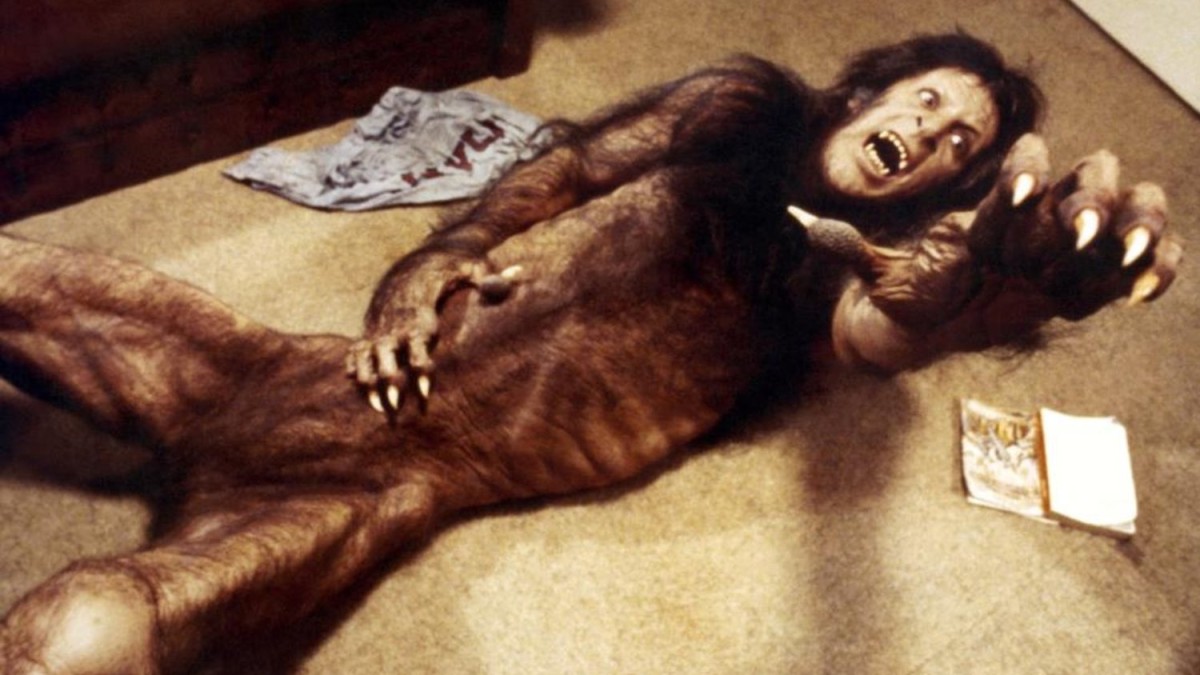
Other efforts of this era include the tv series Werewolf (1987) about a werewolf character on the run; the tv series She Wolf of London (1990-1) where the title character investigates other supernatural mysteries; and Full Eclipse (1993) about a werewolf police squad.
The Howling was also followed by a whole host of cheap, badly made sequels :- The Howling II/The Howling II: Stirba – Werewolf Bitch (1985), The Marsupials: The Howling III (1987), Howling IV: The Original Nightmare (1988), The Howling V: The Rebirth (1989), Howling VI: The Freaks (1991), Howling: New Moon Rising (1995) and The Howling: Reborn (2011). American Werewolf only produced one sequel with the disappointing An American Werewolf in Paris (1997).
Towards More Complex Approaches
There have been a number of modern werewolf films that move away from overt manifestations to tell much more psychological stories. Werewolf Woman (1976) has a woman who believes she is taken over by a werewolf ancestor, while a similar idea plays out in Female Werewolf (2015) and Wolf (2021). Kaos (1984), an anthology of Luigi Pirandello tales, has one story Moonstuck about a newlywed wife who discovers that her husband is a werewolf.
The fascinating Romasanta: The Werewolf Hunt (2004) is based on a supposedly true historical incident where a man was arrested for a series of killings and in court offered the defence that he was a werewolf. The Wolf of Snow Hollow (2020) has a small present-day town haunted by a werewolf before the revelation it is a serial killer in a costume.
Half Moon (2010) concerns a hooker who is hired by a client who may or may not be a werewolf. Wer (2013) concerns a man who might be a werewolf, although other scientific explanations are also discussed. The South Korean A Werewolf Boy (2012) is about the relationship between a girl and a feral werewolf boy. The anime Wolf Children (2012) is about a woman who tries to raise two werewolf children, while the Brazilian Good Manners (2017) featured a woman raising a werewolf child. One interesting item in this regard is the anthology Blood of the Werewolf (2001), which plays three different werewolf stories in interesting and ambiguous ways.
The 1990s onwards have seen some more conceptually challenging variants on the werewolf theme. Wolf (1994) starred Jack Nicholson as a mild-mannered man who suddenly gains a whole new level of self-assertion after being bitten by a wolf. In a similar vein, there was the British tv mini-series Wilderness (1996) about a woman discovering herself as a lycanthrope, while the Canadian Bloodthirsty (2020) charts similar directions. The Danish When Animals Dream (2014) is a low key effort about a girl changing into a wolf in a tiny seaside town. Teddy (2020) was a French variant featuring a male protagonist but took a comedy emphasis.
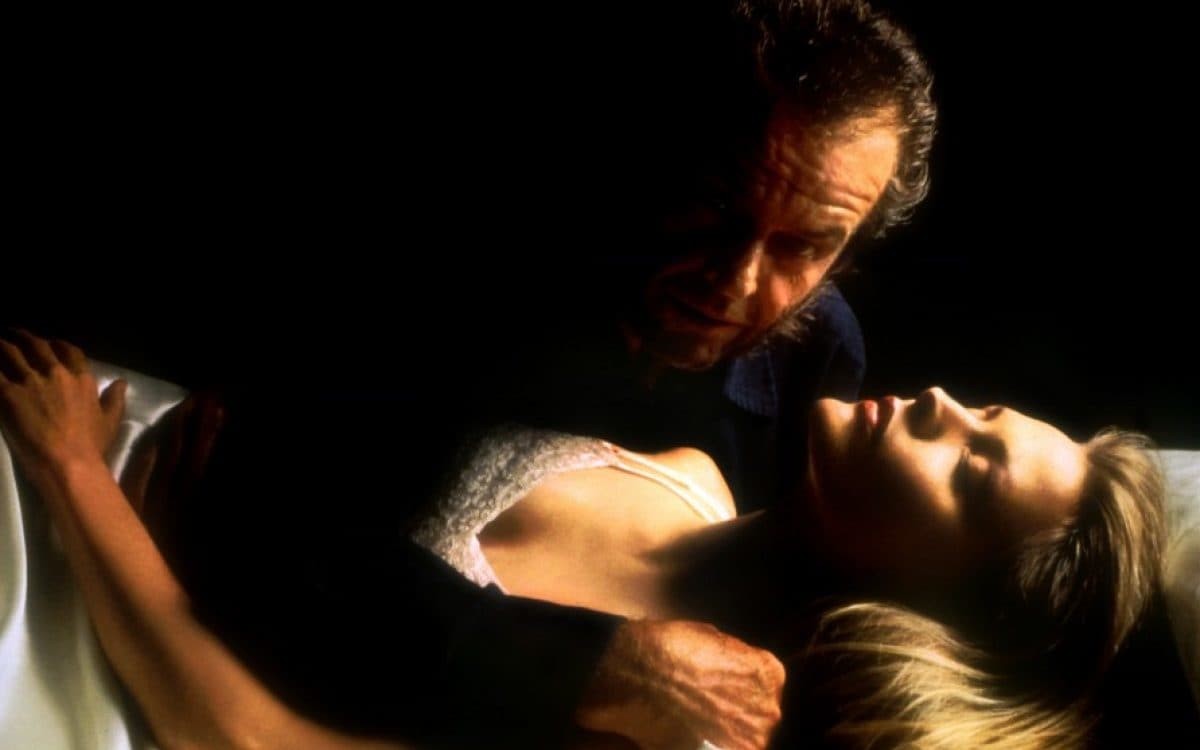
The Canadian Ginger Snaps (2000) was a fine effort with two teenage sisters trying to cope with the onset of lycanthropy. The film was followed by the sequel Ginger Snaps: Unleashed (2004) and the 19th Century prequel Ginger Snaps Back: The Beginning (2004), which took the idea to even more challenging directions. One of the characters in the tv series Being Human (2008-13) is a werewolf who flats together with a vampire and a ghost.
The Wolves of Kromer (2000) interpreted lycanthropy as an amusing metaphor for homosexuality. The British-made Dog Soldiers (2002) was an effective effort about a troupe of soldiers fighting off werewolves, while on the other hand Battledogs (2013) concerned military attempt to use werewolves as soldiers. The X Files episode Shapes (1994) takes place on an Indian reservation. Howl (2015) was a werewolf film set aboard a train, while Late Phases (2014) had a blind man fighting off a werewolf in a retirement village. The Black Mirror episode Mazey Day (2023) features a celebrity actress undergoing a transformation. Byte (2024) concerned a cellphone app that turns users into werewolves.
A number of works have placed werewolves into an historical setting. The Wolf (1983) was set in 19th Century Poland, The Hair of the Beast (2010) was set in 19th Century Quebec. Mad at the Moon (1992) was a Western in which newlywed Mary Stuart Masterson discovers that her husband is a werewolf, while Blood Moon (2014) is also a werewolf film in a Western setting. The Japanese Wolf Warrior (2004) and sequel feature a werewolf samurai. The British Wolf (2019) was set in the early centuries A.D. with Roman centurions fighting werewolves on the other side of Hadrian’s Wall. The beautifully animated WolfWalkers (2020) was set in 17th Century Ireland with the wolf people of the woods ruthlessly persecuted. The Cursed (2021) concerns the hunt for a possible werewolf in 19th Century France. The Creepshow episode Bad Wolf Down (2019) has G.I.’s defending themselves from Nazis with a werewolf. Viking Wolf (2022) features Viking werewolves in modern-day Norway. Bhediya (2022) was a Bollywood variant.
Rather good was Meridian (1990), an erotic fairytale about a woman drawn between two twin brothers who are cursed to turn into beasts. There have been other adult/softcore treatments in Huntress: Spirit of the Night (1996), Wolfhound (2002) and An Erotic Werewolf in London (2006).
Underworld (2003) and sequels Underworld: Evolution (2006), Underworld: Rise of the Lychans (2009), Underworld: Awakening (2012) and Underworld: Blood Wars (2016) are a series of slick Gothique action films concerning a war across the centuries between vampires and werewolves. The series introduced the theme that has become regular in a number of subsequent films of vampires and werewolves being natural enemies.
The vampire/werewolf war also took place in the tv series True Blood (2008-14). There was also the romantic teen drama Twilight (2008) and sequels New Moon (2009), Eclipse (2010), Breaking Dawn Part 1 (2011) and Breaking Dawn Part Two (2012) with a teen heroine caught between vampire and werewolf love interests.
The tv series Wolf Lake (2001), the Filipino tv series Lobo (2008) and the films Skinwalkers (2006), Blood and Chocolate (2007), Wolves (2014) and the future-set Among the Shadows (2019) concern warring werewolf clans and communities, while clan wars also appear in the background of the anime Fullmetal Alchemist: The Secret Star of Milos (2011).
There have been a popular series of tv series, usually aimed at Young Adult audiences, set around werewolf characters and/or clans and communities with the likes of Big Wolf on Campus (1999-2002), Teen Wolf (2011-7), Wolfblood (2012-7), Hemlock Grove (2013-5), The Originals (2013-8), Bitten (2014-6) and The Order (2019-20). In a comedy vein, there was Love Bite (2012) about a female werewolf preying on virgin males.
Wes Craven and Kevin Williamson made Cursed (2005) but this failed to be the deconstruction of the genre that is promised to be, nor was Larry Fessenden’s Blackout (2023) quite a defining work either. The Wolfman (2010) was a big-budget remake of the Lon Chaney classic, while Leigh Whannell’s Wolf Man (2025) was a loose remake.
The videogame adaptation Werewolves Within (2021) was another werewolf whodunnit. Marvel introduced their own werewolf character in Werewolf By Night (2022). The DC Comics equivalent is Timber Wolf, a member of the Legion of Superheroes, who appears on screen in the animated Legion of Super Heroes (tv series, 2006-8) and the film Legion of Super-Heroes (2023).
There have only been sporadic monster bashes in the modern era with the exception of Van Helsing (2004), a failed modern attempt to create a big flashy effects-driven monster bash, the low-budget Frankenstein and the Werewolf Reborn (2005) and more successfully with the tv series Penny Dreadful (2014-6). Monster Brawl (2011) features a werewolf among the various monsters brought together for a wrestling match.
We have seen the odd werewolf turn up in modern Occult Investigator stories such as Dylan Dog: Dead of Night (2009) and the tv series’ Supernatural (2005-20) and The Vampire Diaries (2009-17), while in Hellboy (2019) one of the investigators Major Ben Daimo (Daniel Dae Kim) was a werewolf. Werewolves form part of the background of world of fantasy characters in The Mortal Instruments: City of Bones (2013) and the tv series Shadowhunters (2016-9) and a werewolf is central to the plot of the post-apocalyptic fantasy In the Lost Lands (2025).
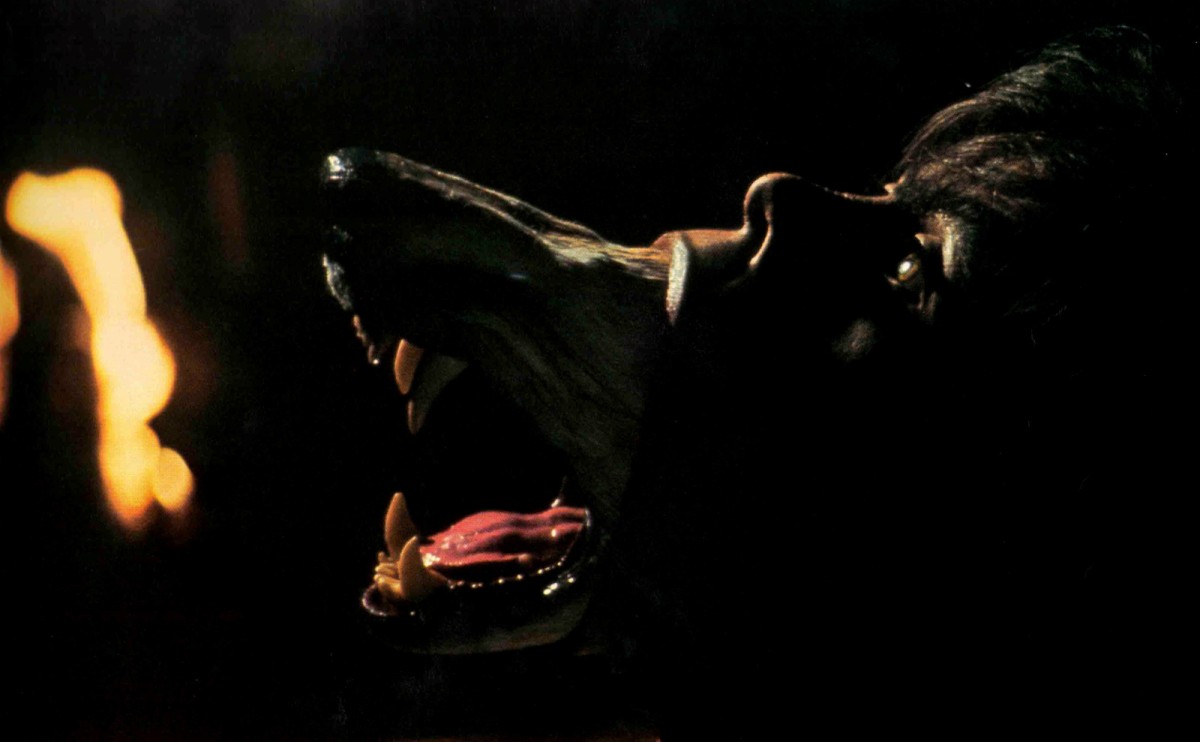
There have been a surprising number of films that have sought to reinterpret the fairytale Little Red Riding Hood with werewolves. The first and best of these was Neil Jordan’s dazzling Freudian interpretation The Company of Wolves (1984). Japan produced the anime Jin-Roh: The Wolf Brigade (1998), which wound Little Red Riding Hood into a complicated metaphor about werewolves and an anti-terrorist squad. There was the amusing Little Red RunningHood episode of the anthology Deadtime Stories (1986). The idea was turned on its head in one of the episodes of Trick ‘R Treat (2008), which reveals that it is Riding Hood and her friends who are werewolves, while Howl (2021) is a modernised variant on the fairytale with Riding Hood as a girl trying to come to terms with her own lycanthropic nature.
Several straight telling of the fairytale such as Red Riding Hood (1987) and the more adult minded Red Riding Hood (2011) also depict the wolf as a werewolf. In Red: Werewolf Hunter (2010) and Little Dead Rotting Hood (2016), Little Red Riding Hood is a present-day werewolf hunter, while the Big Bad Wolf turns up as one of the team-up of fairytale villains in Sinister Squad (2016).
There has still been a stream of B move variants such as The Werewolf Reborn (1998), Eyes of the Werewolf (1999), the anthology Werewolf Tales (2003), Tomb of the Werewolf (2004), The Beast of Bray Road (2005), Mexican Werewolf in Texas (2005), Big Bad Wolf (2006), Lycan Colony (2006), Animals (2008), Audie & the Wolf (2008), Never Cry Werewolf (2008), House of the Wolf Man (2009), War Wolves (2009), Wolvesbayne (2009), Zombie Werewolves Attack (2009), Death Hunter (2010), Monsterwolf (2010), Neowolf (2010), Wolf Town (2011), Werewolf: The Beast Amongst Us (2012), Iron Wolf (2013), Werewolf Rising (2014), Crying Wolf (2015), She Wolf Rising (2016), Blood Redd (2017), Carnivore: Werewolf of London (2017), Lycan (2017), Alpha Wolf (2018), Bride of the Werewolf (2019), Howlers (2019), A Werewolf in England (2020), Werewolf Castle (2021), American Wolf (2022), Werewolf Cabal (2022), Wolf Manor (2022), Wolf Garden (2023), Wolf Hollow (2023), American Werewolf (2024), Cocaine Werewolf (2024), Hellhounds (2024) and Lord of Wolves (2024).
The gonzo title was still alive with efforts such as Wolves of Wall Street (2002), Werewolf in a Womens Prison (2006), President Wolfman (2012), Strippers vs Werewolves (2012), Bubba the Redneck Werewolf (2014), Dances With Werewolves (2017), Werewolves of the Third Reich (2017) and Werewolf Santa (2023), as well as Rob Zombie’s Werewolf Women of the S.S. fake trailer in Grindhouse (2007).
This period has also seen the werewolf children’s film with the charming Alfie the Little Werewolf (2011), Big Bad (2016) and the animated 100% Wolf (2020). Halloweentown High (2004) includes a werewolf as one of the monster children attending a human school.
Other
Other werewolf appearances include in the nudies House on Bare Mountain (1962) and Orgy of the Dead (1965), the peplum film Hercules, Prisoner of Evil (1964), the wolf woman in Conan the Barbarian (1982), mutant post-holocaust werewolves in the terrible She (1983), one of the kombatants in Mortal Kombat: Annihilation (1997), Danny DeVito’s comic werewolf in Big Fish (2003), one of the teachers at Hogwarts in Harry Potter and the Prisoner of Azkaban (2004), a werewolf woodsman in The Brothers Grimm (2005), a werewolf circus performer in Cirque du Freak: The Vampire’s Assistant (2009), the werewolf guard in the Terry Pratchett adaptations Going Postal (2010) and The Watch (2020), and among the unleashed creations in Goosebumps (2015).
TV’s Doctor Who (1963-89, 2005- ) has several episodes featuring alien werewolves, most notedly Tooth and Claw (2006), as well as one of the characters appearing at The Greatest Show in the Galaxy (1989). The animated Batman fought a werewolf in the episode Moon of the Wolf (1993).
The French meta-fiction Providence (1977), which is wound around an aging writer John Gielgud composing stories, has an episode that features a soldier on trial for murder where his defence is that the man he killed was a werewolf.
Other were-creatures feature in the Bollywood film Junoon (1992) about a were-tiger and the self-explanatory Weredeer (2022), while the cheap 1313: Cougar Cult (2012) features three middle-aged women who become were-cougars. The hilarious Nightbitch (2024) has Amy Adams, worn down by mothering an infant, finding she is transforming into a dog.
Recommendations
- WereWolf of London (1935)
- The Wolf Man (1941)
- Cat People (1942)
- I Was a Teenage Werewolf (1957)
- The Curse of the Werewolf (1961)
- Werewolves on Wheels (1971)
- An American Werewolf in London (1981)
- The Howling (1981)
- The Company of Wolves (1984)
- Silver Bullet (1985)
- Meridian (1990)
- Wolf (1994)
- Ginger Snaps (2000)
- Dog Soldiers (2002)
- Ginger Snaps Back: The Beginning (2004)
- Ginger Snaps: Unleashed (2004)
- Romasanta: The Werewolf Hunt (2004)
- Wallace & Gromit in The Curse of the Were-Rabbit (2005)
- True Blood (tv series, 2008-14)
- Chillerama (2011)
- Red Riding Hood (2011)
- Wolf Children (2012)
- Late Phases (2014)
- WolfWalkers (2021)
- The Cursed (2021)
- Nightbitch (2024)
A full list of titles can be found here Werewolves

